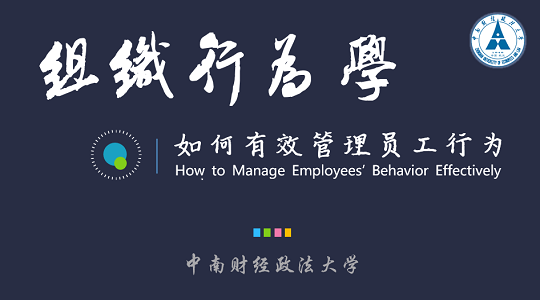
当前课程知识点:国际医学会议交际英语 > Chapter 12 Understanding Conference Etiquette > Exercise > Chapter 2
Hello everyone
I'm Lu Fengxiang from Capital Medical University
Now we are going to talk about Chapter Two
Preparing for International Academic Conferences
Upon completion of this chapter
you are expected to be familiar
with the common types of conference presentations
know the important information
relating to your presentation delivery
Part 1
Common types of conference presentations
When preparing to attend an academic conference
you have to consider the formats of the presentation
In fact
the type of formats depends on
whether or not you submitted a proposal
that was already accepted by the conference
or you were invited to participate in some specific presentation
by the conference organizers
The formats for presentations are varied
The common types include oral presentation
poster presentation
symposium
as well as workshop
1 Oral presentations
Oral presentations
Oral presentations are generally considered
preferable compared to poster presentations
for quite a lot of people feel that
oral presentations are more prestigious
and offer more cache than poster presentations
First individual presentations
Individual presentations can be contributed or invited talks
which often last 15 to 30 minutes in length
and leave a short time
if any
for questions from the audience
As for contributed presentations
anyone who submits a proposal or an abstract
as required by the conference
is potentially eligible to deliver a contributed talk
As for invited talks
the conference organizers invite the experts
in a specific area to share their recent work
It's common that the contributed presentations
are of shorter duration than the invited talks
As for the benefits of the invited speakers receive
that depends on the specific meetings
and the meeting organizers
At some conferences
the invited speakers
may be offered free or reduced registration
lodging
travel
etc
However
there are some cases
that the invited speaker may come with none of these benefits
Therefore
if you are "invited" someday
don't make assumptions for the benefits
It would be clever to ask the conference organizers what services
if any
the conference will provide to you
Quite frequently
being invited to the conference
is considered a significant honor to the researchers
The contributed presenters have prepared their conference paper
before their presentation
and their presentation at the conference is typically a more focused
narrower version of their overall project
Paper presentations are assigned to the appropriate sessions
These sessions generally include
Themed session
Themed sessions primarily include completed research or scholarly work
The presentations will be grouped by topics
or themes into sessions that include several related presentations
This facilitates audience attendance
and topic organization at the conference
Roundtable session
Roundtable sessions allow the presenters an opportunity to interact
and converse with the audience
The presenters are assigned to a table in a conference room
and those interested attendees may join them at their table
These sessions are typically best for position papers
policy analyses
and other types of topics that benefit from extended discussion time
Panel discussions
In panel discussions
two or more speakers will present different aspects
perspectives or thoughts on a particular topic
a research problem
or a question
Each speaker will have an opportunity to present their information
and when all the speakers are finished
typically there is time for discussion
Unless absolutely necessary for the topic
avoid PowerPoint presentations and slides
for they tend to slow down the discussion
keep audience involvement low
and often bore the audiences
Use a small number of slides
only when information or diagrams need to be presented
that cannot easily be explained in words alone
2 Poster presentations
Poster presentations are valuable opportunities
for a large number of conference attendees
to present their work in the form of visual poster presentation
Poster presenters are usually provided a significant amount of space
3 inches * 4 inches or more
on which to fully display their research
in a visually attractive and professional way
The poster presenters generally have the opportunity
to share their research work over an extended period of time
lasting an hour or more
even a whole day at some conferences
This allows the poster presenters to describe
and discuss their research in greater detail
than would be possible in an oral presentation
to those who are genuinely interested in their research
3 Symposium presentations
Symposium presentations
A symposium is a type of conference
or session that focuses on one particular topic
It is often a collection of papers from a number of contributors
Each contributor will have an opportunity
to present and a time for discussion
This type of session is valuable
when multiple perspectives on a particular subject
may be of interest to the audience
and can be put together in one session
A symposium is also a time for networking
and collaboration with peers and colleagues
since these sessions
are often comprised of experts in the fields
who have come together to share ideas
4 Workshop presentations
Workshop
are interactive sessions
varying in length
from approximately one hour to a full day
The sessions usually begin with explanatory
or introductory information
and then move on to involve the audience
in some type of interactive
participatory activity
The interactive presentations at the workshops
are particularly suited for demonstrations
learning new skills or procedures
debates
exhibitions and so on
part 2
Important information relating to your presentation delivery
Preparation is the single most important part
of making a successful presentation
It is important to know the information
like the audience who will attend the conference
the venue where the conference will be held
and the length of time that you will be given to talk etc
1 The audience
The more you know about and understand the background
and needs of your audience
the better you can prepare your presentation
It is worth considering who will be the prospective audience
and it is important to tailor your presentation to the audience
The following three points of the audience should be considered
1 The size of the audience expected
The size of the audience is an important influence on any presentation
In general
the larger the group
the more difficult it is to satisfy everyone
Therefore
you need to know the important qualities of large audiences
First
The members of a larger group are less cohesive
than members of a smaller group
and the behavior of larger audiences is less predictable
than that of smaller groups
Second
The members of a larger group
are likely to have less in common with one another
than members of a smaller group
In any larger group
some members of the audience will disagree with you
Third
The members of a larger group have a greater variation in attitudes
knowledge about the topic or theme
and educational level than members of a smaller group
Large groups present greater challenges
for finding the appropriate balance of technical
and nontechnical information
The attitude of the audience towards you and your topic
can vary in several ways
The audience may like or dislike you and your topic
or take a neutral attitude towards you and your topic
If the audience has a positive attitude towards either you or your topic
you are off to a good start
If the audience dislikes you or your topic
try to discover the source of the negative attitude
and make a special effort
to be positive at the beginning of the presentation
3 The knowledge of the audience expected
What does your audience already know about your topic
and what are their typical educational levels
The answers to these questions determine
what you will need to do to adapt your presentation
to fit this specific audience
When the audience is unfamiliar with your topic
or when your topic is much complex
given the educational backgrounds of the audience
you can help the audience understand you by the following ways
First
Use a vocabulary that everyone will understand
Second
Explain technical terms
Third
Make your organizational plan obvious
and make transitions clear
Fourth
Repeat and emphasize your key points
2 The conference place
It can be of great benefit to have
as much advance information as possible
about the place where you are going to talk
The following points of the conference place should be considered
first
The size of the room
second
The seating arrangements
third
The availability of equipment
e.g.
microphone
overhead projector
and computer equipment
fourth
The position of the light switches
fifth
The availability of parking facilities
so you do not have a long walk
carrying any equipment you might need to take
3 The time for you to talk
Often there is no flexibility in the time of day
that your presentation is made
It may be arranged in the morning
in the afternoon or even in the evening or at the weekend
If you have the opportunity to select the time
the following points should be considered
First Morning
Morning is the best time to talk
because people are generally at their most alert time of a day
However
if it is late morning
there may be other problems
as people begin to feel hungry and think about lunch
Second Afternoon
Early afternoon is not an ideal time to make presentations
for people often feel sleepy after lunch
Mid-afternoon time is better
whereas the end of the afternoon is worse
Third Evening
There is a higher likelihood of audience's attention in the evening
especially when your presentation does not go on too long
The length for you to talk. It would be clever to find out how long you can talk
and check if this includes the time for questions
Beware of over-running time
for other presenters are following you
Also
it is important to remember
that people will find it difficult to maintain concentration
for long periods of time
and this is a good reason for making your presentation succinct
well-structured and interesting
Part 3 Practice
question 1
What are the similarities and differences
between the types of presentation formats
question 2
If your presentation time is arranged in the late morning
and its length is 20 minutes
what preparations will you do prior to your presentation
-Exercise
-Exercise
-Exercise
-Exercise
-Exercise




